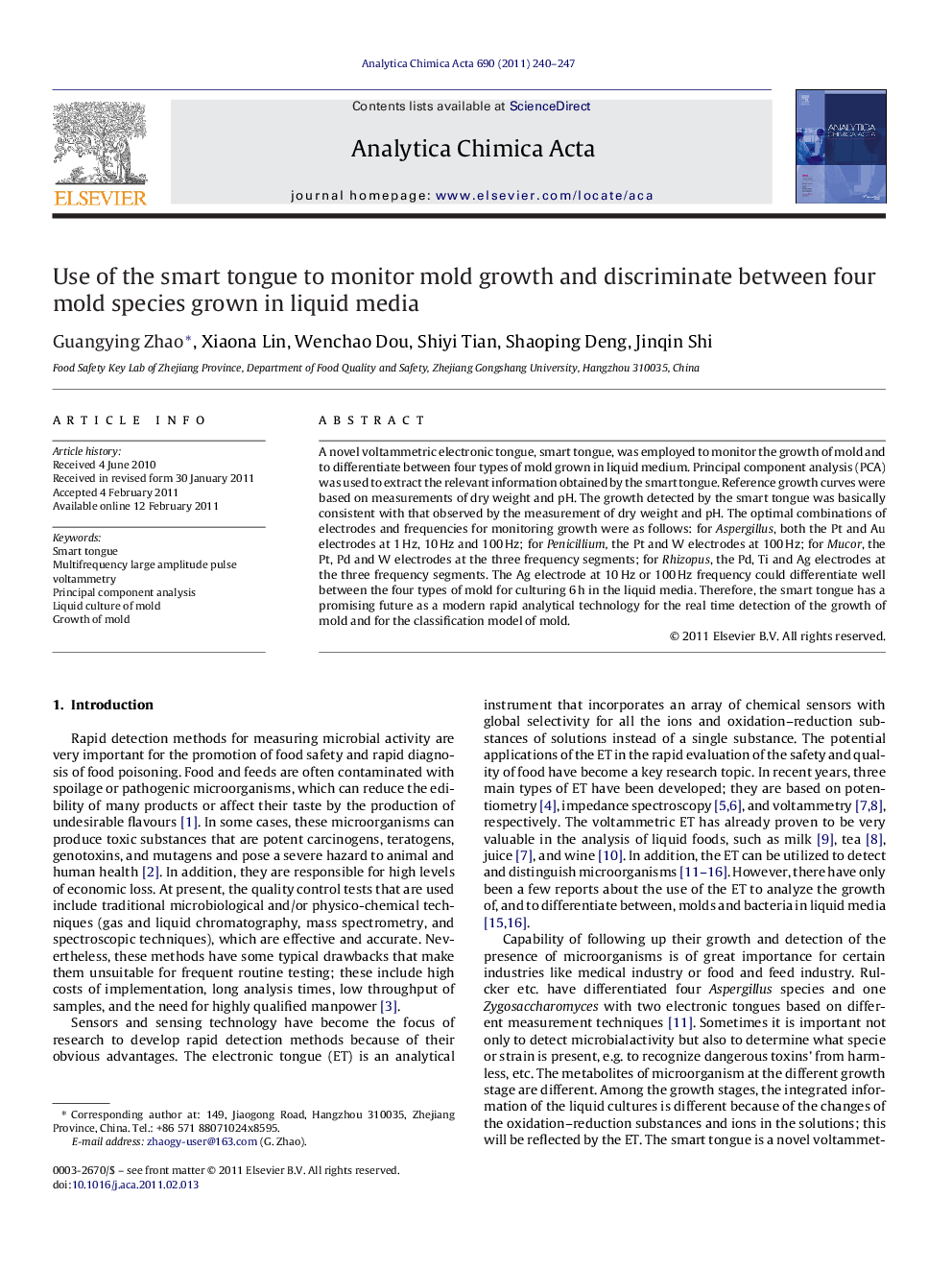| Article ID | Journal | Published Year | Pages | File Type |
|---|---|---|---|---|
| 1166982 | Analytica Chimica Acta | 2011 | 8 Pages |
Abstract
A novel voltammetric electronic tongue, smart tongue, was employed to monitor the growth of mold and to differentiate between four types of mold grown in liquid medium. Principal component analysis (PCA) was used to extract the relevant information obtained by the smart tongue. Reference growth curves were based on measurements of dry weight and pH. The growth detected by the smart tongue was basically consistent with that observed by the measurement of dry weight and pH. The optimal combinations of electrodes and frequencies for monitoring growth were as follows: for Aspergillus, both the Pt and Au electrodes at 1Â Hz, 10Â Hz and 100Â Hz; for Penicillium, the Pt and W electrodes at 100Â Hz; for Mucor, the Pt, Pd and W electrodes at the three frequency segments; for Rhizopus, the Pd, Ti and Ag electrodes at the three frequency segments. The Ag electrode at 10Â Hz or 100Â Hz frequency could differentiate well between the four types of mold for culturing 6Â h in the liquid media. Therefore, the smart tongue has a promising future as a modern rapid analytical technology for the real time detection of the growth of mold and for the classification model of mold.
Keywords
Related Topics
Physical Sciences and Engineering
Chemistry
Analytical Chemistry
Authors
Guangying Zhao, Xiaona Lin, Wenchao Dou, Shiyi Tian, Shaoping Deng, Jinqin Shi,
